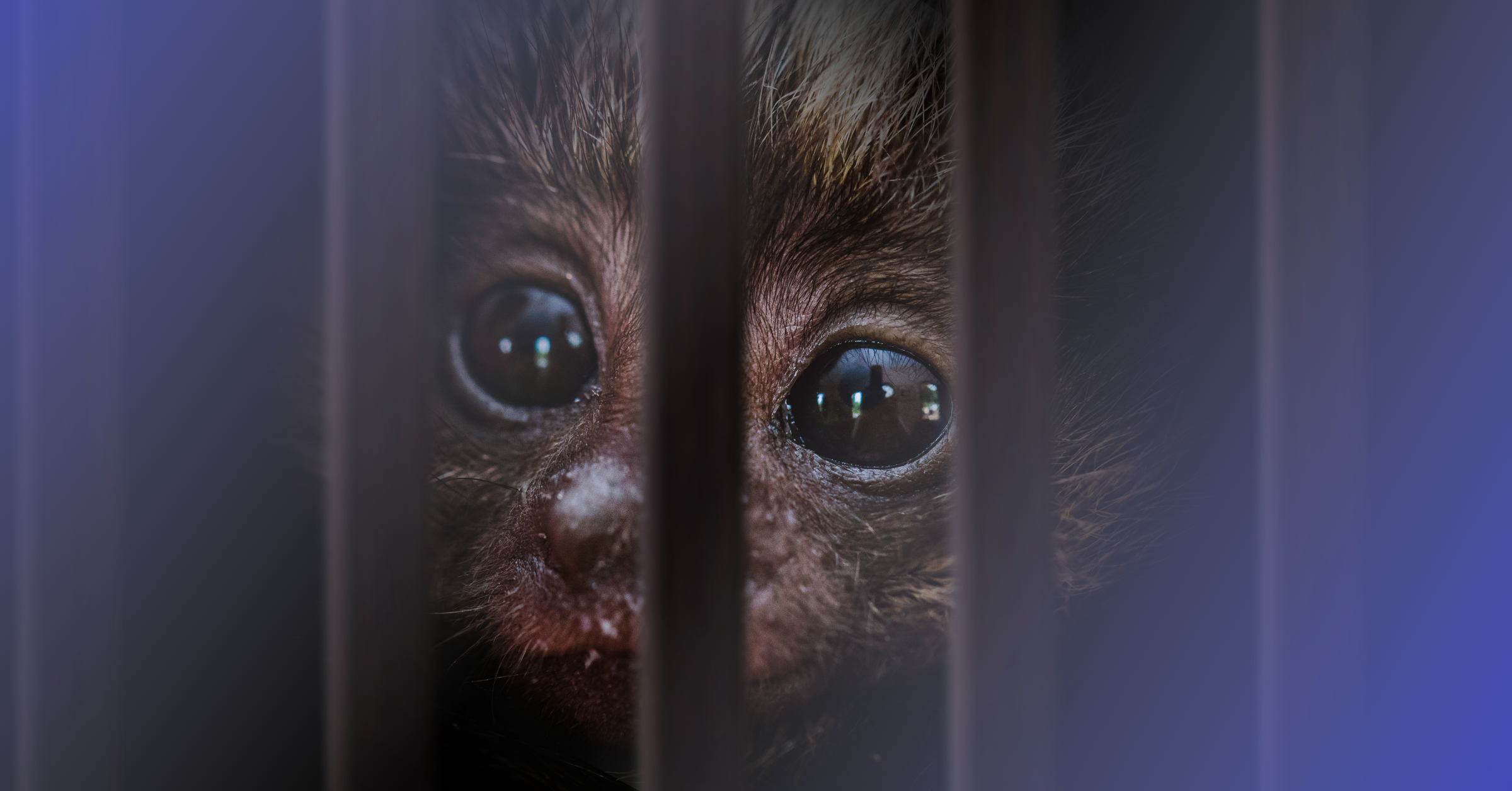
Phone Booths & Shoeboxes: The “Breaking” of Animals in Labs
In a compelling article about nonhuman primate research that we shared earlier this week, former animal researcher Dr. Garet Lahvis makes the case for the futility and cruelty involved in research that exploits other-than-human animals.
In so doing, he highlights an oft-overlooked driver of both this futility and cruelty: the way researchers house other-than-human animals. In fact – and as Dr. Lahvis admits researchers well know – standard laboratory cages are in and of themselves detrimental to the sentient beings they confine, “distort[ing] the[ir] psychology and physiology”.
Laboratory housing mentally deranges other-than-human animals.
Not only do laboratory cages wreak havoc on their occupants’ physical well-being, they also devastate their mental states—this should come as no surprise. For example, per Dr. Lahvis: “The standard cage for a rhesus macaque . . . is about 2.5 feet across, narrow enough for its inhabitants to touch both walls at once.” But, [m]acaques are built to navigate 740 American football fields’ worth of savannah grasslands and forest canopies. Yet inside biomedical labs, they typically get confined to the equivalent of a telephone booth.”
This type of harm befalls all laboratory captives, including the most brutalized but least considered: mice, for whom standard cages “the size of a shoebox” do not even represent a miniscule fraction of the range they would explore in the wild.
Why is this?
Faced with questions about their inhumane practices, researchers often trot out myriad, hollow “justifications”, such as budgetary constraints or the need to control for experimental variables. But, at its core, their motivation for this barbarity is far more nefarious in nature.
Through confinement, researchers “break” their other-than-human research subjects.
Indeed, extreme confinement of other-than-human animals – which involves “immobilizing and violent practices” – have always been a component of human exploitation, explains Sarat Colling. And, in conjunction with “restrictive devices”, such as the restraint chairs used industry-wide by animal researchers – this confinement has served as a means to prevent “animals’ dissent . . . a very real, everyday response to their exploitation”.
Researchers, then, use “spatial or bodily management” to repress and stymie research subjects’ resistance. To control their physical strength and quell their resilient spirits.
To break them.
We at Rise envision a different kind of breaking – that of animals breaking free from laboratories.
And, until they do, we are committed to resisting in solidarity with them. We recently won a federal lawsuit regarding the protection of nonhuman primates’ well-being in labs. It’s a great start, but we know there’s more work to be done. And we won’t stop until every cage in every lab is emptied.
Together, we can throw the cage doors open. Visit our Advocacy Center for dozens of online opportunities for you to raise your voice for animals in labs. Every action you take is a step toward a future without animal experimentation.